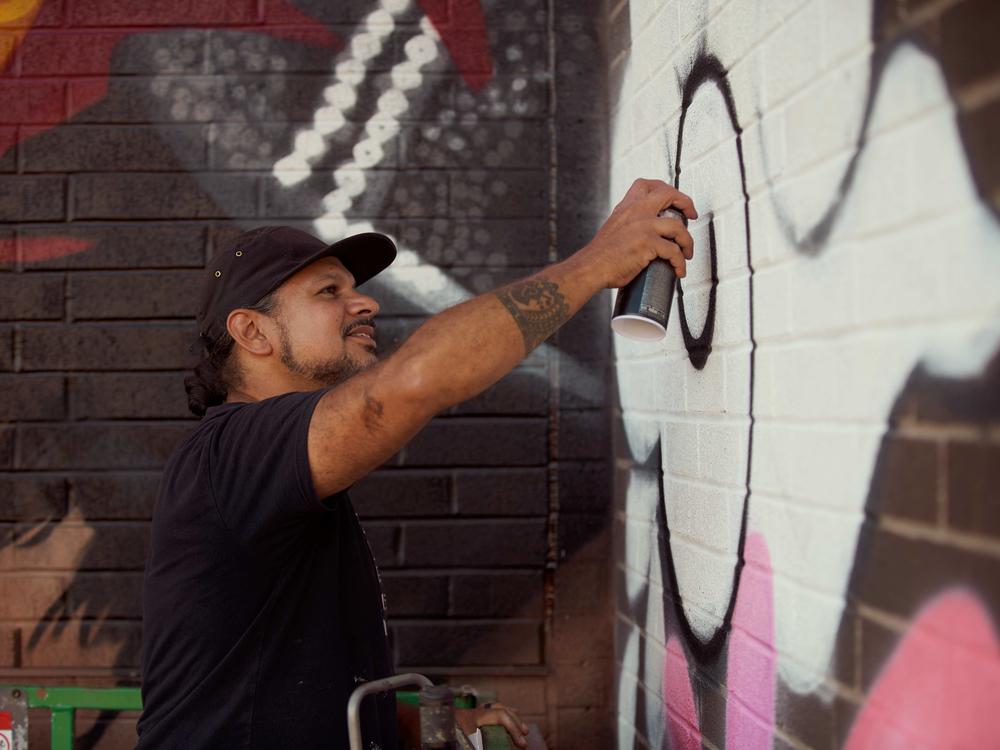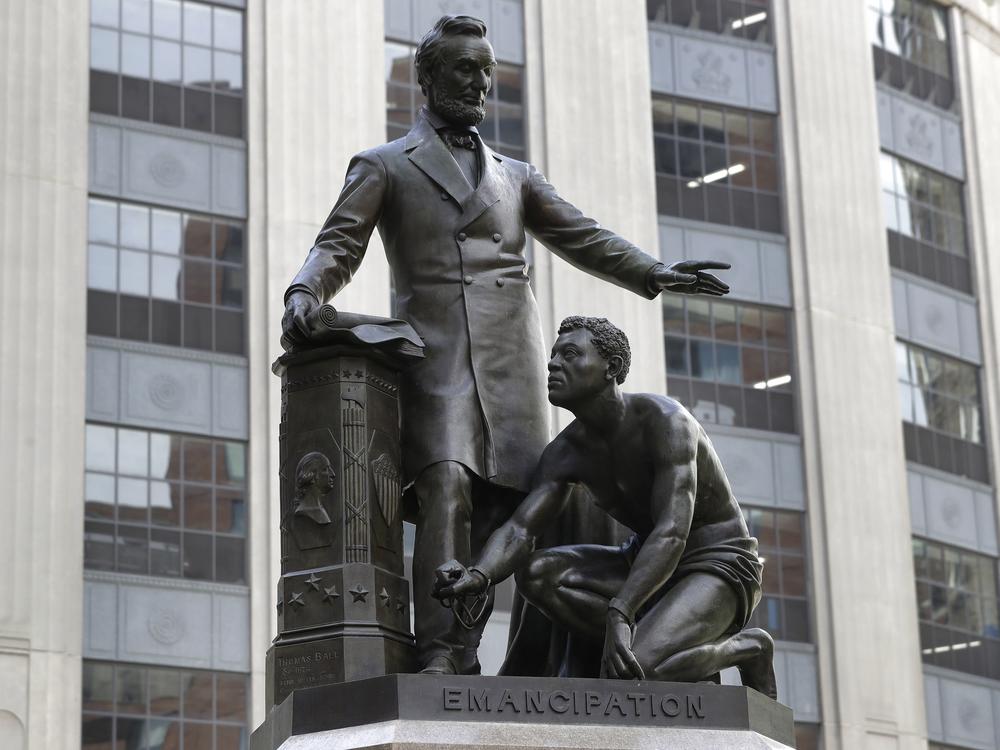Section Branding
Header Content
Boston is shaking up its public art scene
Primary Content
The city of Boston announced Thursday a major, citywide campaign to reimagine public art. The Un-Monument initiative is funded with a $3 million grant from the Mellon Foundation — the largest Boston has ever received for public art programming.
The initiative aims to bring residents, artists and groups together to rethink the form and function of public art across the city — a challenge for a place so steeped in a Colonial past.
"It isn't always easy to bring new things into public space," said Kara Elliot-Ortega, Boston’s Chief of Arts and Culture. "Not just because there might be red tape, but because there are spaces that are thought of as kind of frozen in time in a historic way."
Elliott-Ortega said the funding will be used to spark conversations about public art through temporary installations, free public events and interactive cultural experiences. Sixteen projects have been commissioned for the initiative’s first year. A second group will be chosen late in 2025.
"We are focused on unpacking what kinds of monuments and memorials we want to have in Boston going forward, what they mean to us, what stories are missing," said Elliott-Ortega. "We are inviting people into the conversation from around the city to ask what they want to see."
Boston is one of nine U.S. cities to receive funding from the Mellon Foundation, which last year pledged $500 million over five years to make public art more diverse and inclusive. The others are Asheville, N.C; Chicago; Columbus, Ohio; Denver; Los Angeles; Portland, Ore; Providence, R.I; and San Francisco.
In an interview last year with NPR, Mellon Foundation president Elizabeth Alexander spoke about her hopes for this nationwide effort.
"At the end of this, I hope that the work goes on, with Mellon or with others, because the work of telling stories in public places is eternal work," Alexander said. "And so my hope is that we've just widened the aperture, and that the work continues in a way that recognizes us in all of our power and beauty."
Boston has already begun to transform its monuments landscape. For example, after public discussion in 2020, the city removed "Emancipation Memorial," a 19th century bronze statue by Thomas Ball depicting Abraham Lincoln standing over a kneeling enslaved man. (The Boston monument is a copy; the original is in Washington, DC and has also been the subject of controversy.)
"For many years, people felt like this put Lincoln on a pedestal, while the representation of this African American man was very offensive. We heard a lot of public testimony on that," said Elliott-Ortega.
Victor "Marka27" Quiñonez is among the initial group of artists participating in Un-Monument.
"I don't think that Boston is unique to having this issue of monuments historically being pretty biased," Quiñonez told NPR. "Now it's time to rethink and reimagine what are the right types of monuments and who should we be celebrating and how can they feel more inclusive?"
For Un-Monument, the artist is creating a large-scale sculptural installation, Elevar la Cultura, (Elevate the Culture) consisting of 30 to 40 coolers stacked in the shape of a Mayan pyramid.
He said the project uses the plastic insulated picnic cooler as a metaphor for the immigrant experience.
"For the most part, people use coolers for leisure time — at celebrations, barbecues, and all those things," said Quiñonez. The artist, who was born in Mexico, came to the U.S. as a child and today divides his time between Boston and New York. "But for me, and for many migrant cultures, the cooler is a way of survival. It's a way that people who just come to this country are able to make an honest living for their families, selling fresh fruit, cooked food, candy, water, whatever it may be. It's the first way to have income coming in. It's this symbol of resilience and perseverance."
This story was edited by Jennifer Vanasco.


